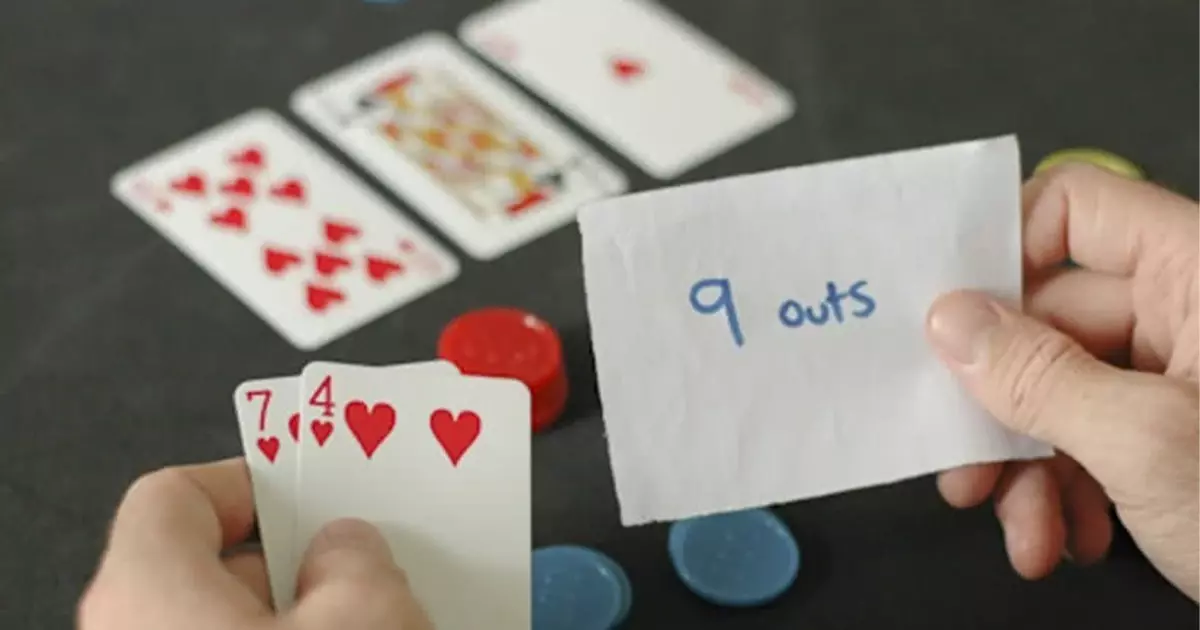“Do I need to learn poker math?”, many poker players ask themselves.
The answer is simple: “No, not necessarily.” You can win money without even learning the poker math. However, it is very difficult to become a consistently winning player without learning the math of the game. Moreover, without knowledge of poker math, you will severely limit your potential.
Thus, learning poker math is not essential, but ignoring it would be a very foolish decision.
1. Why Do I Need To Know Poker Math?
Poker Texas Hold’em is a game of odds and probabilities. The effectiveness of the game can only be assessed over a long distance. Therefore, you cannot evaluate your skill or the skill of an opponent based on the result of several games.
One can only find out whether the correct actions were taken or not. In the event that you did everything right, but still lost, you will be a plus in the long run. To study the correctness of the actions, and poker math is needed.
Poker math is used to calculate how beneficial an action will be. This discipline allows you to find out the odds (probability) of winning in the current hand, based on the hand dealt and the cards on the table. Also, poker mathematics teaches you to make the right decisions, taking into account the size of the pot and the rates of opponents.
Math is at the heart of every decision at the poker table, if you strive to become a great poker player, you definitely shouldn’t ignore poker math!
2. The Practice Example of Using Poker Math
To understand how to use poker math, let’s observe the specific example. Let’s say Hero is holding cards.
After the raise, the player calls, all other players have folded their cards. As a result, the amount of $ 20 is formed in the bank. On the flop, the dealer deals cards: . Villain’s first move and he donk-bet $ 10.
Hero has the ability to get a flush, because he already has 4 hearts. If drawn, he will most likely win.
The purpose of poker math is to give the exact answer – should you call your opponent’s bet or not? By choosing the right action, Hero will win over the long run, even if he loses this hand.
To make the right decision, you need to make two calculations:
- Calculate the probability that the expected combination (flush) will be collected;
- Calculate how profitable it is to call $ 10.
For these math calculations, you need to become familiar with new terms: outs, odds, and pot odds.
3. Some Necessary Poker Math Terminology

Let’s use poker math to calculate the probability of making a winning combination. To do this, you need to count the outs.
Outs in poker are the number of cards that can bring a flush or the cards that complete the winning combination.
The flush will close if one of the hearts comes up. Hero has 2 hands, and the same number on the flop. There are only 13 cards of each suit in the deck. It’s not hard to calculate that there are 9 outs left. Thus, any of these 9 hearts will yield a winning combination.
Now you need to determine the probability that out of the 47 cards remaining in the deck, exactly one of these 9 will fall out.
Odds are the probability of hitting a particular card in poker.
This indicator can be calculated in two ways – accurate and fast.
Accurate: divide the number of outs by the number of cards in the deck and multiply by 100%: 9 / 47×100% = 19.15%.
Fast: multiply the number of outs by 2: 9 x 2 = 18%. For beginners, it is better to use the second method to save time.
One more important termin of poker math – pot odds. Pot odds are the ratio of the required bet to the size of the entire pot (potential winnings).
4. It’s Time to Make The Final Decision

So, now we know that heart will come in 19% of hands in the turn, or about every fifth hand. But this information still does not answer the question – will it be profitable to call a bet? In order to understand this, it is necessary to consider another concept – pot odds.
In our case, this is 10 / (30 + 10) = 25%.
To understand whether a call will be profitable or not, you need to compare the odds with the odds of the pot. If the odds are higher, then the call will be profitable, lower – unprofitable. In our case, 19% is less than 25%, which means that calling in this hand is a losing action for Hero.
This example clearly demonstrates the practical application of poker math – by means of simple calculations, the inexpediency of a call was determined. Now you do not need to hope for luck, or wonder what to do in a certain situation. Mathematics provides an accurate answer, saving the player from unnecessary thought.
Don’t be afraid to play and to win poker! Gain your poker experience right now! Download Turn Texas Holdem Poker on Google Play and AppStore.




